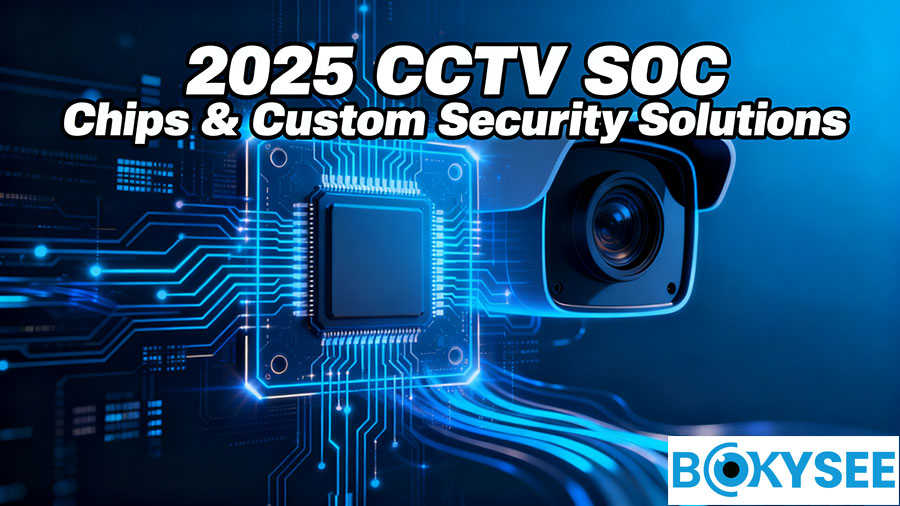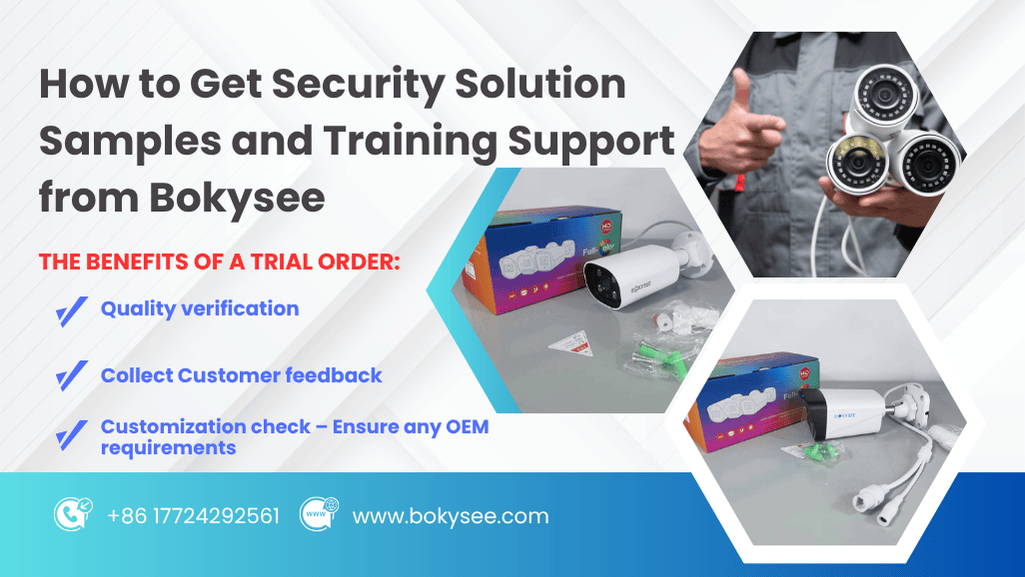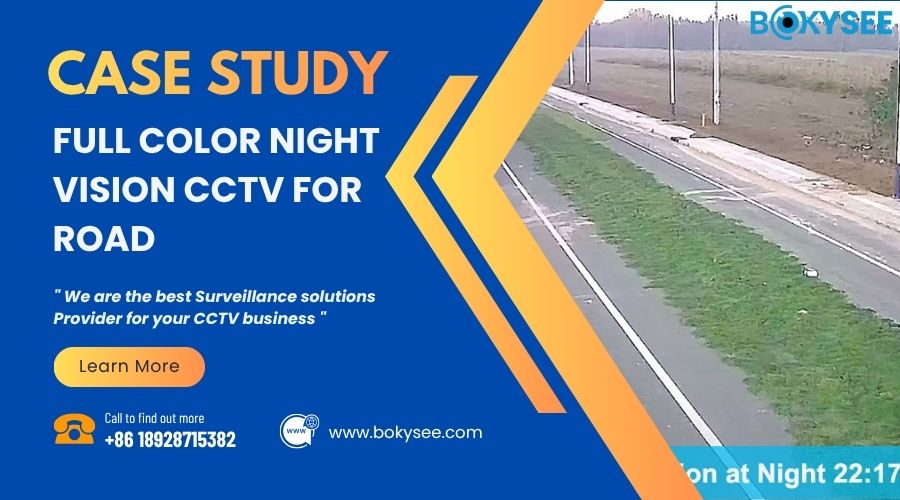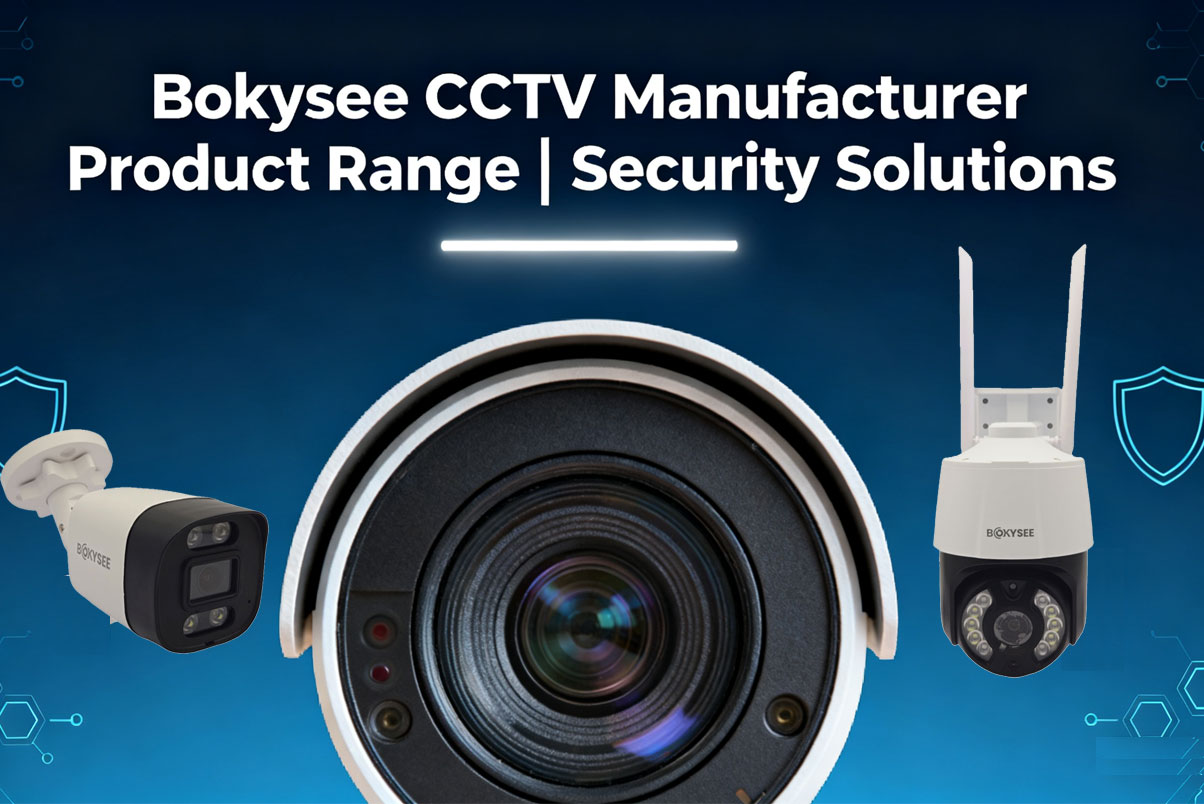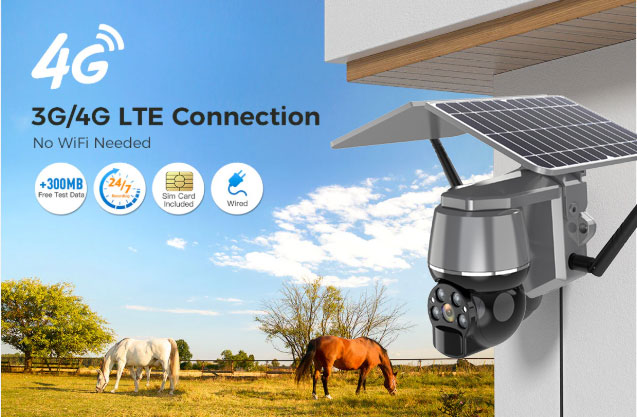
4G security cameras redefine modern surveillance by providing reliable monitoring without the need for WiFi. These cameras utilize LTE networks to ensure seamless connectivity in remote areas. The demand for wireless solutions has surged due to the need for flexibility and accessibility in surveillance systems. Cellular security cameras offer advanced features like motion detection, night vision, and high-resolution imaging. The purpose of this guide is to simplify the process of selecting the best 4G security camera for your needs. Whether for home or outdoor use, these cameras deliver dependable security solutions.
What Are 4G Security Cameras?
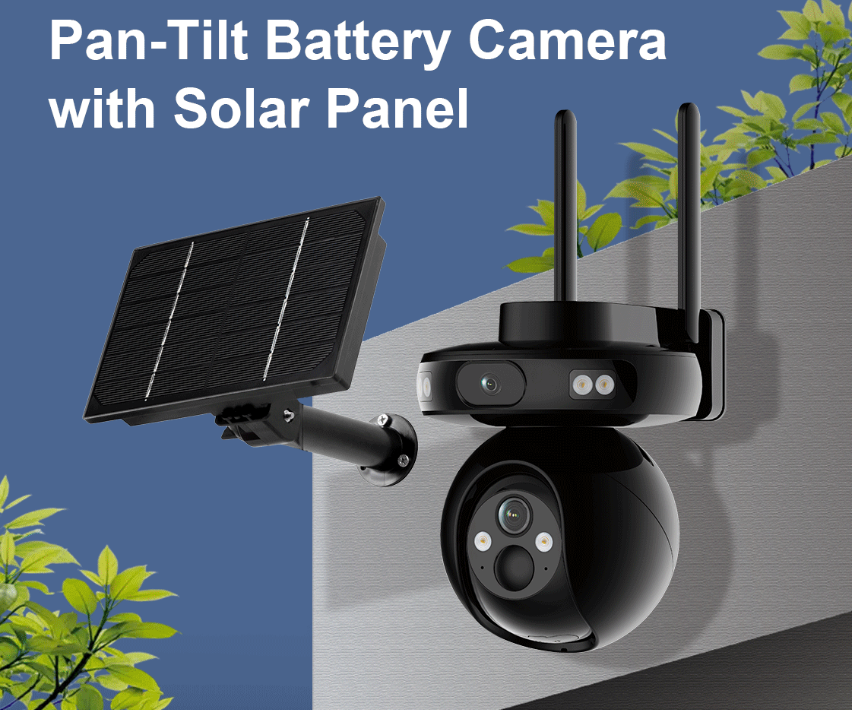
Definition and Key Features
4G security cameras, also known as 4G LTE security cameras, are advanced surveillance devices that rely on cellular networks for operation. These cameras use a SIM card to connect to the 4G LTE network, allowing real-time monitoring and instant alerts without requiring WiFi or wired connections. Cellular cameras are ideal for locations where traditional internet access is unavailable, such as construction sites, remote farms, or vacation properties. With features like high-resolution imaging, motion detection, and night vision, these cameras ensure reliable security in various environments.
How 4G Connectivity Works in Security Cameras
4G connectivity enables cameras to transmit live video feeds and notifications through cellular networks. The cameras use a SIM card to establish a connection with the nearest 4G LTE tower. This setup ensures consistent performance even in areas without WiFi. Cellular reception plays a critical role in the functionality of these cameras. Strong reception allows smooth video streaming and timely alerts. Poor reception can result in delays or interruptions in monitoring.
Differences Between 4G and Wi-Fi Cameras
4G security cameras differ from Wi-Fi cameras in several ways. 4G cameras operate independently of traditional internet connections, making them suitable for off-grid locations. Wi-Fi cameras rely on a stable internet connection, limiting their use to areas with strong Wi-Fi signals. Cellular cameras offer greater flexibility and portability due to their reliance on LTE networks. Wi-Fi cameras often require fixed installations near routers, reducing their adaptability. The choice between the two depends on the specific needs of the user and the location of the installation.
Benefits of Using 4G Security Cameras
Flexibility and Portability
4G security cameras provide unmatched flexibility. These cameras can be installed in remote areas without worrying about WiFi availability. The portability of cellular cameras makes them easy to move and reposition as needed. For outdoor environments, solar-powered options like Bokysee's cameras ensure continuous operation without external power sources. This flexibility allows users to secure hard-to-reach locations effectively.
Reliable Connectivity in Remote Areas
Cellular security cameras excel in remote areas where WiFi is not an option. The use of 4G LTE networks ensures reliable connectivity for live video streaming and instant alerts. Locations like barns, rural homes, or construction sites benefit from the dependable performance of these cameras. Cellular security eliminates the need for wired setups, simplifying the installation process.
Where Can You Use a 4G Security Camera?
4G security cameras are versatile and suitable for various applications. These cameras are perfect for monitoring outdoor spaces like farms, warehouses, or parking lots. Home security benefits from the adaptability of cellular cameras, especially in areas with unstable WiFi. Vacation homes and rental properties gain enhanced protection with these cameras. Temporary setups, such as events or construction projects, also benefit from the portability and ease of installation.
4G LTE Cellular Security Camera Market Overview
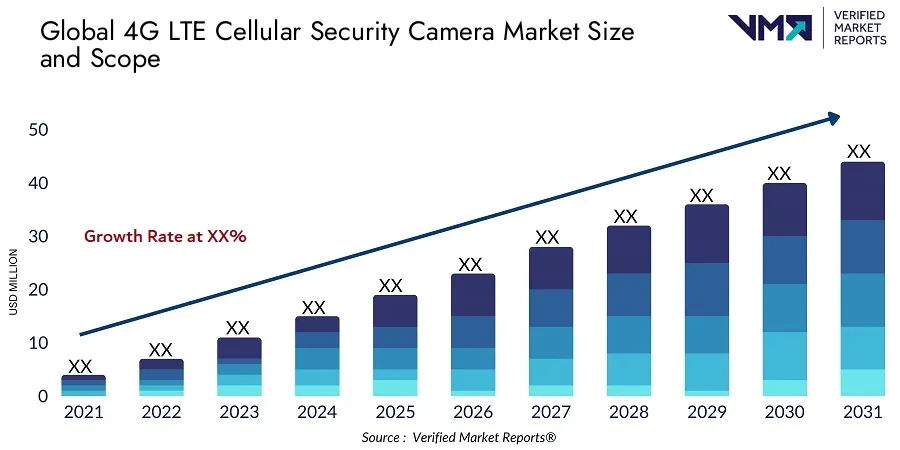
Key Drivers of 4G LTE Solar Security Camera
Increased Demand for Remote Monitoring:
The need for reliable surveillance in remote areas has grown significantly. Many users now seek solutions that do not rely on traditional internet connections. 4G security cameras meet this demand by offering seamless monitoring through LTE networks. Locations like farms, construction sites, and vacation properties benefit from this technology. The ability to install cameras without WiFi ensures flexibility for various applications.
Advancements in Camera Technology:
Technological improvements have transformed cellular surveillance cameras into powerful tools. Features like high-resolution imaging, motion detection, and night vision enhance security capabilities. Solar-powered options, such as Bokysee's cameras, provide sustainable solutions for outdoor environments. Integration with SIM card technology ensures uninterrupted connectivity. These advancements make cellular video cameras a preferred choice for modern surveillance needs.
Cost-Effective Solution for Connectivity:
Traditional wired systems often require extensive setup costs. Cellular surveillance cameras eliminate the need for complex installations. Users save money by avoiding expenses related to wiring and internet infrastructure. Solar-powered models further reduce costs by offering energy-efficient options. Affordable camera pricing attracts more users to adopt cellular home security solutions.
Restraints of 4G Solar Security Camera
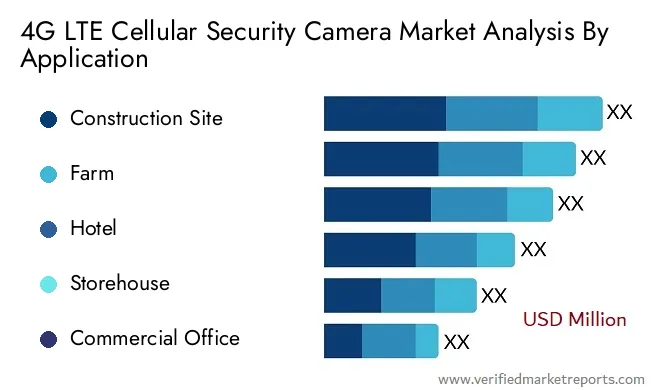
High Initial Investment:
The upfront cost of 4G security cameras can be a barrier for some users. Advanced features like solar panels and LTE connectivity increase camera pricing. However, the long-term benefits often outweigh the initial expense. Reliable performance and reduced maintenance costs make these cameras a worthwhile investment.
Data Security Concerns:
Data transmission over cellular networks raises privacy issues. Unauthorized access to cellular surveillance camera feeds can compromise security. Users must choose cameras with strong encryption protocols. Reliable brands like Bokysee prioritize data protection to address these concerns.
Network Dependability:
The performance of cellular surveillance depends on network strength. Poor LTE reception can disrupt video streaming and notifications. Users must ensure strong signal coverage at installation sites. Choosing locations with stable connectivity improves the reliability of cellular CCTV cameras.
Trends of 4G LTE Cellular Security Camera
Integration with Smart Home Systems:
The popularity of smart homes has influenced the design of home security cameras. Many 4G security cameras now integrate with smart devices. Features like app control and voice commands enhance user convenience. This trend makes cellular home security more appealing to tech-savvy consumers.
Increased Focus on Artificial Intelligence (AI):
AI technology is revolutionizing cellular surveillance. Intelligent motion detection reduces false alarms by identifying specific movements. AI-powered analytics provide insights into security patterns. These innovations improve the efficiency of cellular security systems.
Growing Adoption in Urban Areas:
Urban environments face rising security challenges. The demand for cellular home security solutions continues to grow in cities. Compact designs and wireless setups make 4G security cameras ideal for apartments and offices. Solar-powered options offer eco-friendly alternatives for urban users.
How to Select Best 4G LTE Cameras
1. Powering Options of 4G Security Cameras & Systems
Powering options play a critical role in the functionality of 4G security cameras. Many models rely on rechargeable batteries, which provide flexibility for remote installations. Solar-powered options, like Bokysee's cameras, offer a sustainable solution for continuous operation. Solar panels ensure uninterrupted power supply, even in off-grid locations. This eliminates the need for frequent battery replacements or external power sources.
A reliable power system ensures consistent performance for cellular security. Cameras with efficient power management reduce downtime and maintenance efforts. Users should prioritize models with long-lasting batteries and solar compatibility. A thorough cam battery review helps identify the best options for durability and efficiency. Selecting the right powering option guarantees dependable surveillance for outdoor and remote areas.
2. Smart Motion Detection & Notifications of 4G Wireless Security Cameras
Smart motion detection enhances the effectiveness of 4G wireless security cameras. Advanced sensors detect movement and send instant alerts to users. Accurate motion detection minimizes false alarms caused by environmental factors. Notifications allow users to respond quickly to potential security threats. Features like intelligent PIR sensors improve detection accuracy for better monitoring.
Motion detection technology adds value to home security systems. Cellular security cameras with this feature ensure timely updates for users. Expert advice from Reolink emphasizes the importance of useful alerts. Receiving relevant notifications improves the overall user experience. Buyers should focus on cameras that combine smart detection with reliable alert systems. This ensures comprehensive protection for homes and businesses.
3. Cellular Reception of 4G CCTV Cameras
Cellular reception determines the reliability of 4G CCTV cameras. Strong LTE connectivity ensures smooth video streaming and real-time alerts. Poor reception can disrupt monitoring and compromise security. Users must evaluate signal strength at installation sites before purchasing. Locations with stable LTE coverage provide optimal conditions for cellular security cameras.
The integration of a SIM card enables LTE mobile security cameras to connect seamlessly. Reliable reception supports uninterrupted surveillance in remote areas. Bokysee's LTE-enabled cameras excel in maintaining connectivity in challenging environments. Buyers should consider LTE security camera recommendations based on network compatibility. Ensuring strong cellular reception guarantees consistent performance for 4G security cameras.
4. Night Vision of 4G Surveillance Cameras
Night vision technology plays a crucial role in ensuring round-the-clock security. 4G security cameras equipped with advanced night vision features can capture clear footage even in complete darkness. High-resolution imaging combined with infrared LED lights enables these cameras to monitor areas effectively during nighttime. Starlight night vision technology, found in models like Bokysee's solar-powered cameras, enhances visibility by producing brighter and more detailed images.
Reliable night vision ensures that outdoor spaces, such as parking lots or construction sites, remain secure after sunset. For home security, night vision-equipped cameras provide peace of mind by capturing any suspicious activity around the property. The ability to monitor without relying on external lighting adds value to cellular security systems. Selecting cameras with superior night vision capabilities ensures uninterrupted surveillance for both residential and commercial properties.
5. Affordability of 4G IP Cameras
Affordability is a key consideration when choosing 4G IP cameras. While the initial investment for cellular security cameras may seem higher, the long-term benefits often outweigh the cost. Models like Bokysee's solar-powered cameras eliminate the need for additional wiring or power sources, reducing installation expenses. Solar panels and rechargeable batteries further lower operational costs by providing sustainable energy solutions.
The absence of monthly fees for WiFi services makes LTE-enabled cameras a cost-effective option for remote monitoring. Many cameras also feature local storage options, such as SD card slots, which help users avoid recurring cloud storage fees. Evaluating the total cost of ownership, including maintenance and data usage, helps buyers make informed decisions. Affordable 4G security cameras offer reliable performance without compromising on essential features.
6. Recording Options of 4G LTE Security Cameras
Recording options determine how effectively 4G LTE security cameras store and manage surveillance footage. Many cameras support local storage through SD cards, allowing users to save recordings directly on the device. This option provides convenience and eliminates reliance on cloud services. For users seeking additional flexibility, some cameras offer hybrid storage solutions that combine local and cloud storage.
Continuous recording ensures that no critical moments are missed, while motion-triggered recording saves storage space by capturing only relevant events. Intelligent motion detection, available in Bokysee's cameras, enhances this feature by minimizing false alarms. Accessing recorded footage remotely through LTE connectivity adds another layer of convenience. Choosing cameras with versatile recording options ensures comprehensive coverage and easy access to important video files.
How to Set Up and Install 4G Security Cameras
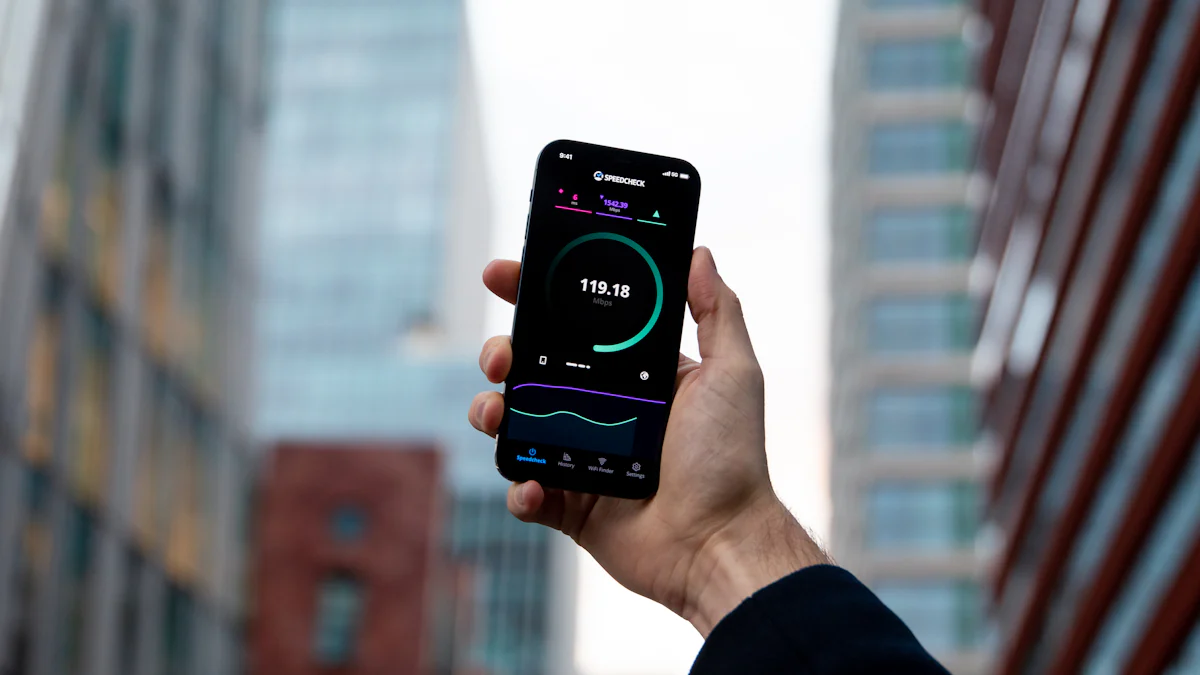
Pre-Installation Checklist
Choosing the Right Location
Selecting the right location ensures effective monitoring. Identify areas requiring surveillance, such as entry points, driveways, or outdoor spaces. For outdoor setups, prioritize locations with minimal obstructions to maintain a clear view. Avoid placing cameras near reflective surfaces to prevent glare in captured footage. For home security cameras, ensure coverage of vulnerable spots like backyards or garages.
Consider lighting conditions when choosing a location. Areas with consistent lighting provide better video quality. For night monitoring, cameras with advanced night vision features, like Bokysee's solar-powered cameras, perform well even in low-light conditions. Proper placement enhances the overall efficiency of 4G security cameras.
Ensuring Strong 4G Signal
A strong LTE signal guarantees uninterrupted performance. Test the signal strength at the intended installation site before mounting the camera. Use a mobile device with a compatible SIM card to check connectivity. Locations with poor signal reception may result in delayed notifications or interrupted live streaming.
For remote areas, position cameras higher or closer to open spaces to improve signal quality. Avoid installing cameras near thick walls or metal objects that can block signals. Reliable cellular security depends on stable connectivity, so prioritize areas with consistent LTE coverage.
Step-by-Step Installation Guide
Mounting the Camera
Start by gathering the necessary tools, including screws, a drill, and a mounting bracket. Attach the bracket securely to the chosen surface. Ensure the bracket is level to avoid tilted footage. For outdoor installations, select weather-resistant mounting hardware to protect against environmental factors.
Position the camera on the bracket and adjust the angle for optimal coverage. For home security cameras, focus on entry points or high-traffic areas. Tighten the screws to secure the camera in place. Solar-powered models, like Bokysee's cameras, require proper alignment of the solar panel to maximize sunlight exposure. A well-mounted camera ensures stable and reliable surveillance.
Configuring the Camera Settings
Power on the camera and insert the SIM card for LTE connectivity. Follow the manufacturer's instructions to activate the camera. Download the companion app to configure settings. Connect the camera to the app using the QR code or provided setup method.
Adjust motion detection sensitivity to reduce false alarms. Enable notifications for real-time alerts. For cameras with local storage, insert an SD card to save recordings. Test the live feed to confirm proper functionality. Configuring settings optimizes the performance of 4G security cameras for both residential and commercial use.
Recommended 4G Security Cameras
Top Picks for Different Needs
Best Overall: Bokysee 4G Security Camera
Bokysee 4G Security Camera offers unmatched reliability and performance. The camera features high-resolution imaging for clear visuals in any lighting condition. Intelligent motion detection minimizes false alarms, ensuring accurate alerts. The solar-powered design eliminates concerns about power interruptions. The integration of a rechargeable battery ensures continuous operation in remote areas. Bokysee supports both WiFi and LTE connectivity, making it versatile for various surveillance needs. The durable construction withstands harsh outdoor environments, making it ideal for long-term use.
Best for Budget: Reolink Go Plus
Reolink Go Plus provides an affordable solution without compromising quality. The camera delivers sharp video with its 2K resolution. A built-in PIR motion sensor enhances detection accuracy, reducing unnecessary notifications. The compact design allows easy installation in small spaces. Reolink Go Plus operates on LTE networks, ensuring reliable connectivity in off-grid locations. The camera includes a micro SD card slot for local storage, eliminating the need for cloud subscriptions. This budget-friendly option is perfect for users seeking cost-effective cellular security.
Best for Outdoor Use: Arlo Go 2 LTE Security Camera
Arlo Go 2 LTE Security Camera excels in outdoor surveillance. The weather-resistant design protects against rain, heat, and cold. The camera features color night vision for enhanced visibility in low-light conditions. Two-way audio allows real-time communication, adding convenience for outdoor monitoring. Arlo Go 2 connects seamlessly to LTE networks using a SIM card, ensuring uninterrupted performance in remote areas. The long-lasting battery supports extended use, making it a dependable choice for outdoor security.
Features to Look for in Recommended Models
Motion Detection and Alerts
Motion detection technology plays a vital role in 4G security cameras. Advanced sensors identify movement and send instant alerts to users. Intelligent detection reduces false alarms caused by environmental factors like wind or animals. Real-time notifications help users respond quickly to potential threats. Cameras like Bokysee and Reolink Go Plus offer customizable sensitivity settings for better accuracy. Reliable motion detection ensures comprehensive protection for homes and businesses.
Two-Way Audio
Two-way audio enhances communication and security. This feature allows users to listen and speak through the camera in real time. Home security cameras with two-way audio enable interaction with visitors or delivery personnel. For outdoor use, this feature deters intruders by creating a direct line of communication. Cameras like Arlo Go 2 include high-quality microphones and speakers for clear sound transmission. Two-way audio adds an extra layer of functionality to cellular security systems.
Frequently Asked Questions (FAQs)
Common Concerns About 4G Security Cameras
Do 4G Cameras Work Without Wi-Fi?
4G security cameras operate independently of Wi-Fi. A SIM card connects the camera to an LTE network, enabling live streaming and notifications. This feature makes cellular security ideal for remote locations without traditional internet access. Many models, like Bokysee's solar-powered cameras, combine 4G connectivity with solar energy for uninterrupted performance. Users can monitor properties without relying on Wi-Fi signals.
How Much Data Do 4G Cameras Use?
Data consumption depends on usage patterns. Live streaming, motion-triggered recordings, and resolution settings influence data usage. For example, high-resolution cameras like Reolink Go Plus consume more data due to detailed video quality. On average, a 4G camera uses 1GB to 3GB of data per month for basic monitoring. Adjusting resolution or recording frequency helps manage data usage effectively. Choosing a suitable data plan ensures cost-efficient operation.
Troubleshooting Tips
What to Do If the Camera Loses Signal
Signal loss disrupts cellular security. Testing LTE signal strength at the installation site prevents this issue. Relocating the camera to a higher position often improves reception. Avoid placing cameras near thick walls or metal objects that block signals. For persistent issues, contacting the network provider helps resolve signal-related problems. Reliable signal strength ensures consistent performance for 4G security cameras.
How to Extend Battery Life
Battery life impacts the efficiency of 4G security cameras. Solar-powered options, like Bokysee's cameras, reduce reliance on frequent recharging. Positioning the solar panel in direct sunlight maximizes energy collection. Disabling non-essential features, such as continuous live streaming, conserves battery power. Regular maintenance, including cleaning the solar panel, enhances energy efficiency. Efficient power management ensures long-lasting surveillance for outdoor and remote setups.
4G security cameras offer reliable monitoring through the 4G LTE network. These cameras ensure live viewing and instant alerts without relying on WiFi. Choosing the right camera depends on factors like cellular reception, power options, and installation needs. Bokysee's solar-powered cameras provide excellent features for outdoor and remote locations. High-resolution imaging, intelligent motion detection, and night vision enhance security for homes and businesses. Assessing specific requirements helps in selecting the best option. Reliable brands like Bokysee deliver quality and performance for dependable surveillance.
See Also
The Advantages of 4G Solar Cameras for Home Safety
Exploring 4G Cellular Technology in Security Cameras and Its Benefits
Top Wireless Home Security Cameras to Consider in 2024
Leading IP Camera Brands for Home Protection in 2025
A Guide to Selecting the Right CCTV Manufacturer for Home Safety

